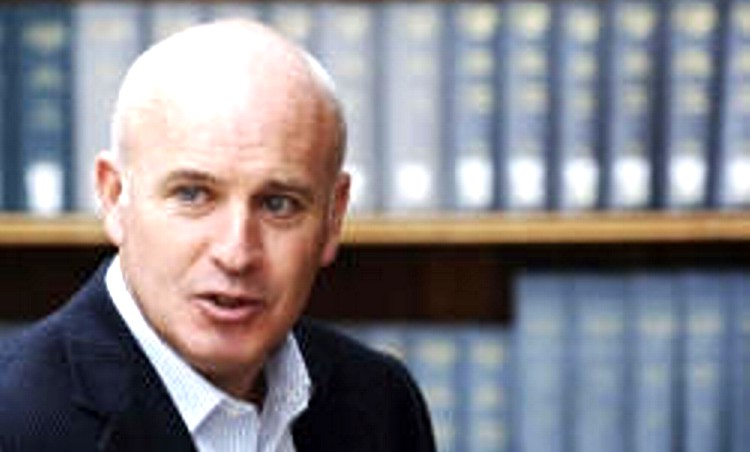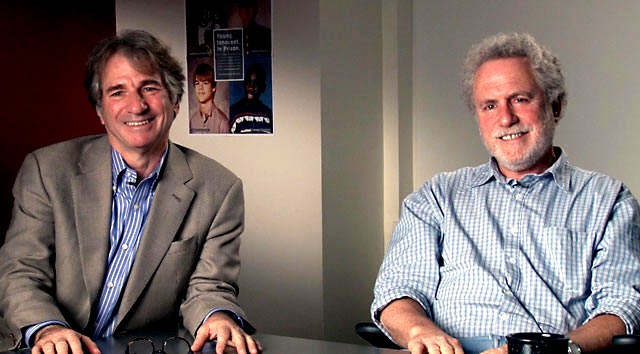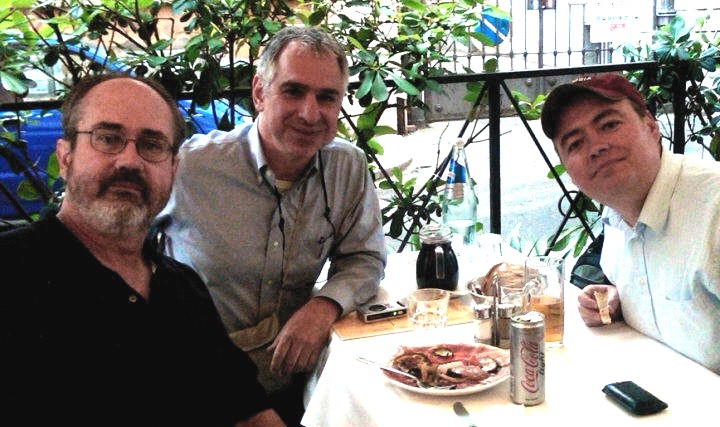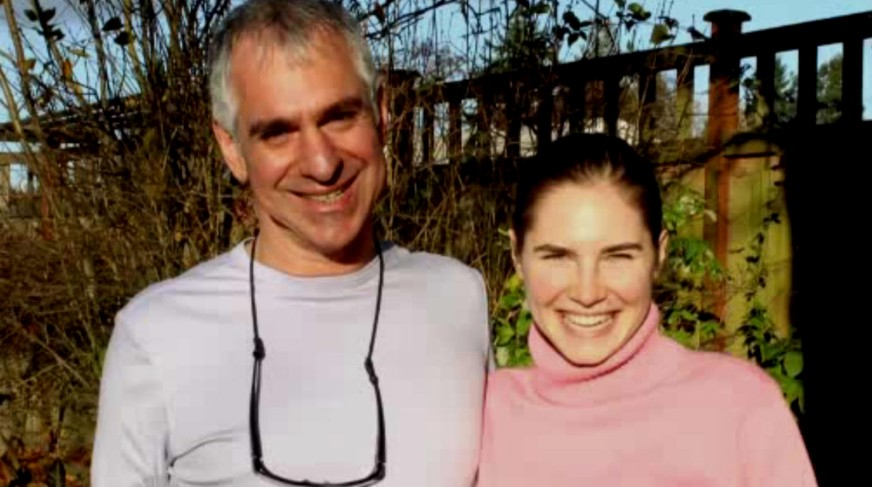
Category: DNA and luminol
How Greg Hampikian Abuses Two Positions of Trust In Serially Misrepresenting The Hard Evidence
Posted by The Machine
Overview
Greg Hampikian holds two positions of trust: he is a teacher of biology at Boise State University in Idaho (population 1.6 million) and he is the local representative for Idaho of the Innocence Project,
His use or misuse of his Innocence Project mantle via a case way outside his official area in Italy to leverage his prominence is particularly questionable. Few Italians know who he is or can read him and so challenge him, and Italy’s justice system probably allows less false convictions than any other, though he never makes that fact clear.
This post explains how the investigations of local Innocence Project representatives are not always reliable - and how Hampikian for his own benefit serially misrepresents the evidence in Meredith’s case.
Michael Naughton
The Innocence Project is mostly professionally staffed by cool-headed, competent law and genetics professors who are more interested in promoting truth and justice than their own place in world history. But as another case in the news also shows, it doesn’t always work out that way.
Yesterday’s breaking news shocked many in England. Convicted killer Simon Hall finally admitted that he was indeed guilty of the murder in 2001 of Joan Albert, a pensioner who was savagely stabbed five times.
Simon Hall had been vehemently protesting his innocence for 12 years. There are some striking similarities between this case and the Meredith Kercher case.
- The perp’s mother convinced that her child is innocent of murder? Yes.
- Politicians, legal experts, journalists and members of the public convinced that person convicted of murder is innocent? Yes.
- Television documentary casting doubt on the conviction? Yes.
- Criticisms of police investigation and claims there is no DNA evidence and no motive? Yes.
- Website set up in order to convince the public that the person convicted of murder is actually innocent? Yes.
- An academic staff member of the Innocence Project leaps on board and starts pontificating before closely looking? Yes.
Simon Hall’s confession has made his most adamant defender Dr. Michael Naughton, the local director of the Innocence Project at Bristol University (image below). look like a real dupe, and may have destroyed his credibility as an expert and a campaigner on wrongful convictions.
Dr. Naughton long campaigned hard for the release of Simon Hall, and called repeatedly for his conviction to be quashed. Simon Hall’s public reversal will set back both the Innocence Project and his own career.

[Above: the hapless Dr. Michael Naughton, made to look a fool by a manipulative murderer]
Greg Hampikian
Greg Hampikian has been widely observed on TV and in print, and in front of his own students and other assemblies, proclaiming that he solved the DNA part of the case and was key to the defenses achieving Knox’s part-acquittal and Sollecito’s acquittal in 2011 (annulled last March).
Hampikian holds two positions of trust: he is a teacher of biology at Boise State University in Idaho (population 1.6 million) and he is the local representative for Idaho of the Innocence Project, which New York law teachers Barry Sheck and Peter Neufeld co-founded to ensure correct outcomes in American DNA-based cases.
Whenever Greg Hampikian speaks about the Meredith Kercher case, his university and his Innocence Project credentials are invariably emphasized. This is presumably to convince a generally ill-informed or wrongly informed public that he is the most credible expert, whose opinion that Amanda Knox is innocent can be trusted completely.
But can Greg Hampikian really be trusted when it comes to the Meredith Kercher case?
The simple answer to this question is no. When you listen to or read Greg Hampikian’s comments about the case in the interviews, it becomes abundantly clear that:
- He is ignorant of most of the basic facts of the case.
- He hasn’t read the official court documents in their entirety, but has instead relied on Amanda Knox’s family and supporters for his information without bothering to do any fact-checking.
- He incessantly downplays or misrepresents the hard evidence against Amanda Knox and Raffaele Sollecito and overstates that against Rudy Guede.
- He doesn’t limit himself to his own narrow area of expertise, but speaks about other aspect of the case and gets basic facts wrong.
- Like so many in the seedy defense operation he ridicules his counterparts in Italy, most of whom are much better qualified in criminal-case DNA than he is.
Hampikian and Knox
In ignoring most of the evidence against Amanda Knox, he repeatedly pretends there was only ONE hard piece of evidence against her. He claimed in an interview with John Curly on Kiro FM that the ONLY evidence that implicates Amanda Knox is the DNA on the large knife.
You only have to read the Massei report to know that this is not true. For sake of brevity, I’ll summarise just some of the multitude of evidence that Hampikian doesn’t even mention in his media interviews, let alone refute.
1. Amanda Knox’s DNA was found mixed with Meredith’s blood in three places in the bathroom: on the ledge of the basin, on the bidet, and on a box of Q Tips cotton swabs (192).
2. Knox’s DNA and Meredith’s DNA was also found mingled together in a bare bloody footprint revealed by Luminol in the hallway and a mixture of Knox’s DNA and Meredith’s blood was also found in Filomena’s room (380).
3. Three bare bloody footprints were revealed by Luminol in the hallway and one in Amanda Knox’s room were attributed to Knox (247).
4. Hampikian doesn’t say anything about Amanda Knox’s false and malicious accusation against Diya Lumumba which Massei concluded was done to lead investigators down the wrong track (389).
5. Hampikian ignores the evidence that shows that the break-in at the cottage was staged such as the corroborative eyewitness testimony that stated there were shards of glass on top of clothes and objects on Filomena’s room (53) and the fact that Rudy Guede’s bloody shoeprints led straight out of Meredith’s room and out of the cottage (44) which indicates that he didn’t stage the break-in in Filomena’s room or go into the blood-spattered bathroom after Meredith had been stabbed.
6. Hampikian doesn’t address Amanda Knox’s numerous lies never mind provide a plausible innocent explanation for them.
Judge Massei outlined numerous examples of these lies in his report: she falsely claimed she received a text message from Diya Lumumba when she was at Sollecito’s apartment (322); there are various discrepancies in her statements about the time she and Sollecito ate dinner (78); her claim that she and Sollecito had a peaceful night of continuous and prolonged sleep is contradicted by Sollecito’s activity on his computer, the turning on of his cell phone and the testimony of Marc Quintavalle (85). Hampikian doesn’t explain why Amanda Knox gave multiple conflicting alibis.
7. Hampikian has said nothing about the Umbria Procurator General Galati’s observation that Knox knew specific details of the crime that she could have only known if he had been present when Meredith was killed. I suspect Greg Hampikian is blissfully ignorant of Galati’s appeal.
- According to multiple witnesses at the police station, Knox said she was the one who had found Meredith’s body, that she was in the wardrobe, that she was covered by the quilt, that a foot was sticking out, that they had cut her throat and that there was blood everywhere. Knox wasn’t in a position to have seen anything when the door was kicked in.
- Dr Galati pointed out in his appeal that Knox described the spot where Meredith was murdered and described the state of the body, the room and the injury to Meredith’s throat. He concluded that Knox knew everything because she was in the room at the time of the murder and when Meredith was left in the condition in which she was discovered. The judges at the Italian Supreme Court who annulled the acquittals also noted that Knox had known these details and that Judge Hellmann had ignored these clues.

[Above: Barry Sheck and Peter Neufeld, who co-founded and manage the Innocence Project]
Hampikian and Sollecito
Greg Hampikian also ignores the other key pieces of evidence against Raffaele Sollecito. In an interview that was posted on the KPLU 88 website Hampikian made the astonishing claim that none of the evidence collected from the crime scene belonged to either Knox or Sollecito:
All of the evidence taken from the crime scene belonged to either Meredith Kercher or this guy Rudy Guide (sic). There’s no reason to invoke (sic) these other two people,” Hampikian said.
Really?! This bizarre claim was made even though Hampikian essentially conceded that Sollecito’s DNA was on Meredith’s bra clasp in an open letter he signed along with a number of other scientists:
DNA testing of this item using the Identifiler kit showed a mixture of DNA, with the majority of DNA consistent with that of the victim. Raffaele Sollecito could not be excluded as a source of a minor component of DNA with peaks of approximately 200 rfu. Y-STR testing confirmed that the male haplotype detected was consistent with the DNA of Raffaele Sollecito.
Hampikian goes on to claim that the bra clasp was contaminated, without offering any scenario or proof of this. He ignores all the other evidence against Sollecito. Again for the sake of brevity, I will briefly outline some of the key pieces of this evidence.
1. Two bloody footprints were attributed to Raffaele Sollecito. One of them was revealed by Luminol in the hallway and the other was on the blue bathmat in the bathroom. Andrea Vogt explained how detailed the analysis of the footprint was in a report for the Seattle Post-Intelligencer:
All the elements are compatible with Mr. Sollecito’s foot,” Rinaldi said, pointing with a red laser to a millimeter-by-millimeter analysis of Sollecito’s footprint projected onto a big-screen in the courtroom. He used similar methods to exclude that the footprint on the bath mat could possibly be Guede’s or Knox’s.
“Those bare footprints cannot be mine,” said Sollecito in a spontaneous statement”¦. But the next witness, another print expert, again confirmed Rinaldi’s testimony, that the print, which only shows the top half of the foot, matches the precise characteristics of Sollecito’s foot.
2. Computer and telephone records provide irrefutable proof that Sollecito lied repeatedly to the police about what he was doing on 1 and 2 November 2007: he didn’t speak to his father at 11.00pm; he wasn’t surfing the Internet from 11.00am to 1.00am and he didn’t sleep until around 10.00am because he played music on his computer from approximately 5.30am for half an hour and he used his mobile at about 6.00am.
3. Sollecito gave at least three completely different alibis which all turned out to be false. He even admitted in his witness statement that he had lied to the police. Hampikian has never addressed Sollecito’s multiple false alibis and numerous lies.
Hampikian and Guede
Greg Hampikian exaggerates the evidence against Rudy Guede
1. Greg Hampikian told an audience of about 200 at Boise State University that Rudy Guede’s DNA was all over the victim: “You had one guy whose DNA was all over the victim.”
This is a common FOA myth which has been repeated by journalists in the media ad nauseam. If Greg Hampikian had bothered to read the official court reports such as the Micheli report and the Massei report, he would have known that there was only one sample of Guede’s DNA on Meredith’s body.
You would expect a scientist to be give precise factual statements, not vague, untrue comments. Listen to him closely and he resembles a dishonest second-hand car salesman who relies on hyperbole and rhetoric with these comments rather than an objective scientist. Hampikian’s intention in this instance was clearly to persuade and not inform.
2. Greg Hampikian makes unsubstantiated claims about Rudy Guede’s criminal history
In his interview with Joey Ortega Greg Hampikian claimed that Rudy Guede “had committed crimes before”. He didn’t specify what these crimes were let alone support his opinion that Guede had committed any crimes before with any proof i.e. specifically refer to any criminal convictions.
The reason why he didn’t refer to any specific criminal convictions is that Rudy Guede didn’t even have any convictions at the time of the murder. It would have been more accurate for him to have said that some people suspect Guede has committed crimes before and give some specific examples.
3. Hampikian seems intent on portraying Guede as a hardened criminal. He falsely claimed in a number of interviews (see here and here) that Guede was already in the criminal DNA database at the time of the murder.
According to Barbie Nadeau, Rudy Guede was identified by fingerprints found in Meredith’s room. The police had to go to his apartment to take DNA samples from a hairbrush. Within a few days, that DNA was matched to the DNA found at the cottage (Angel Face, page105, Kindle Edition).

[Above: Greg Hampikian with Knox-Mellas family member and enabler - shown getting his marching orders?]
Hampikian and Italian experts
Hampikian incessantly tries to discredit the police investigation. In this he doesn’t limit himself to his own area of expertise - biology - but speaks out about other aspects about the case and gets basic facts wrong.
1. For example, he falsely claimed in an interview with CNN that the authorities didn’t like the way Amanda Knox behaved and that’s why they wanted to investigate her, Sollecito and Lumumba:
They didn’t like the way Amanda behaved, whatever that means, and so they wanted to investigate her and Raffaele and her boss.
The real reasons why Knox and Sollecito officially became suspects and were arrested actually had nothing to do with Amanda Knox’s odd behaviour. On 5 November 2007, Sollecito admitted in his witness statement that he had lied to the police, and he stated that Amanda Knox wasn’t at his apartment on the night of the murder. He was arrested and taken into custody.
After Knox was informed that Sollecito was no longer providing her with an alibi, she repeatedly stated in her witness statements that she was at the cottage when Meredith was killed. She too became a suspect and was arrested. Hampikian has completely ignored these crucial details.
2. Hampikian regurgitates another common FOA myth with his claim that the authorities weren’t able to say why they took Sollecito’s kitchen knife from his apartment. In Boise Weekly: “They aren’t able to say why they took that (knife).”
The usual FOA claim is that the knife was randomly selected. Hampikian has clearly relied on Amanda Knox’s supporters for this misinformation and not on the testimony of the person who actually selected the knife - Armando Finzi.
Mr Finzi testified in court that he chose the knife because it was the only one compatible with the wound as it had been described to him.
“It was the first knife I saw,” he said. When pressed on cross-examination, said his “investigative intuition” led him to believe it was the murder weapon because it was compatible with the wound as it had been described to him
3. Hampikian has never proved that there was any contamination.
As I’ve already pointed out in my previous post, the Italian Supreme Court has explained how DNA evidence should be assessed in court i.e. contamination must be proven with certainty not supposition.
Greg Hampikian has never described the specific place and time where contamination could have plausibly occurred. It’s not good enough to claim that it was possible or probable.
Dr Galati made the following common sense observation in his appeal:
“It is evident that the “non-exclusion” of the occurrence of a certain phenomenon is not equivalent to affirming its occurrence, nor even that the probability that it did occur.” (57).
He goes on to explain that unless there is proof of contamination of the knife and bra clasp, you can’t simply claim there was in order to nullify this evidence:
...if one is not able to [67] affirm where, how and when they would have happened, they cannot enter into a logical-juridical reasoning aimed at nullifying elements already acquired, above all if scientific in nature.” (57).
It doesn’t seem to have ever crossed Greg Hampikian’s mind that the bra clasp and knife really might not have been contaminated.
Final Thoughts
Greg Hampikian is in a privileged position of trust because he is often interviewed about the case in the media and gives presentations about the case at academic institutions. His impressive credentials mean that he is trusted by many members of the general public and by people in the media. However, he has abused this trust by not bothering to get acquainted with the details of the case, getting basics facts wrong and completely misrepresenting the evidence against Knox, Sollecito and Guede.
I hope Simon Hall’s confession will make Hampikian realise that sometimes the truth isn’t always what you want it to be and Innocence Project experts on wrongful convictions can be duped and get it wrong.
Perhaps the next time Hampikian is interviewed about the case he’ll avoid hyperbole and rhetoric and just stick to the facts and his own area of expertise. But I wouldn’t count on it.
Wow! Perugia Shock’s “Frank Sfarzo” Claims Copyright Infringement In This Video
Posted by Peter Quennell
One week ago our poster Machine posted an excellent video by the talented video creator ViaDellaPergola on the strength of the evidence represented by the knife.
In a move perhaps unique in this whole case, where both right and wrong information has flowed freely (some of it perhaps too freely), “Frank Sfarzo” of Perugia Sock (real name Sforza) has now claimed a copyright infringement. Click on the arrow above for the confirmation.
The YouTube management have removed the video unusually quickly - another first, in our experience, as such claims are usually argued back and forth in a process.
“Frank Sfarzo” has repeatedly been thrown on the defensive in the past, both for seeking commercial gain from Meredith’s case, and for allowing many seemingly highly libelous comments by anonymous posters.
More to come as we check out the video, and see what the problem actually was.
By the way, in most legal systems copyright can only be claimed by real people with real names. We wonder what name YouTube knows the elusive “Frank” by - and why he has to use a false name.

